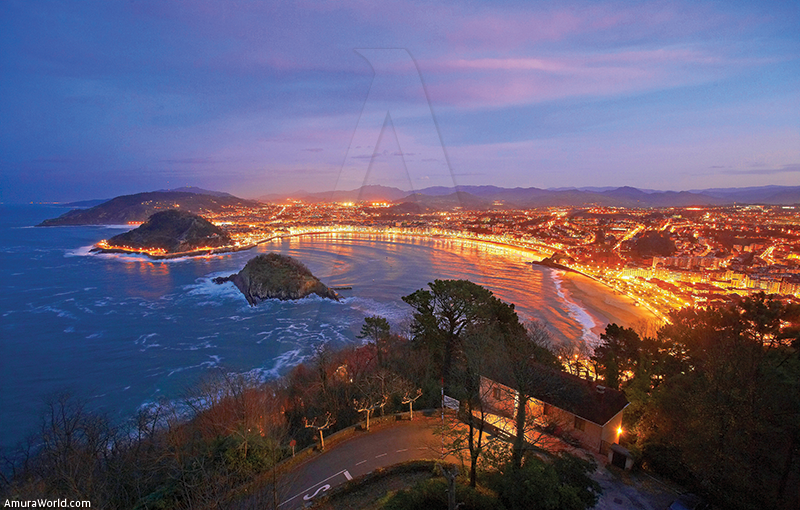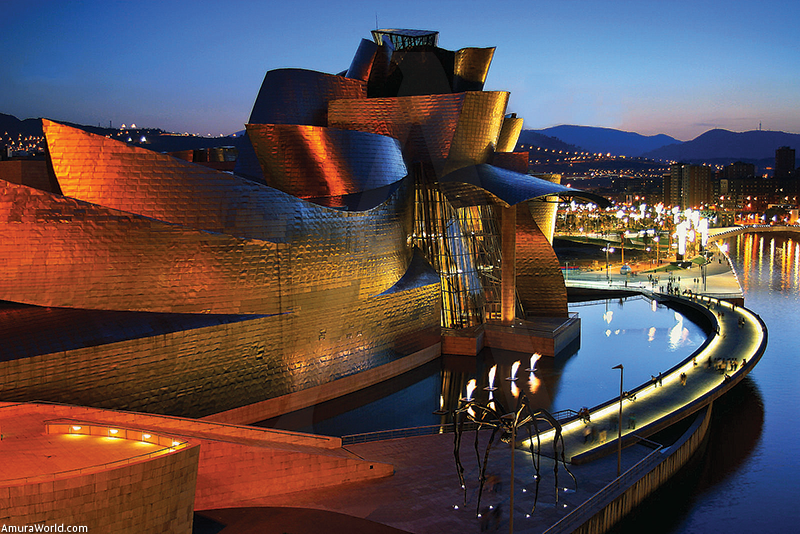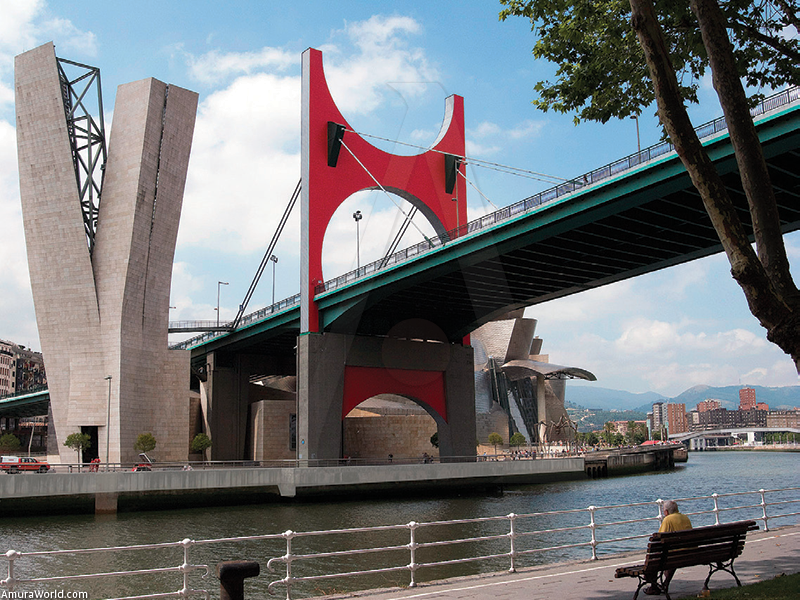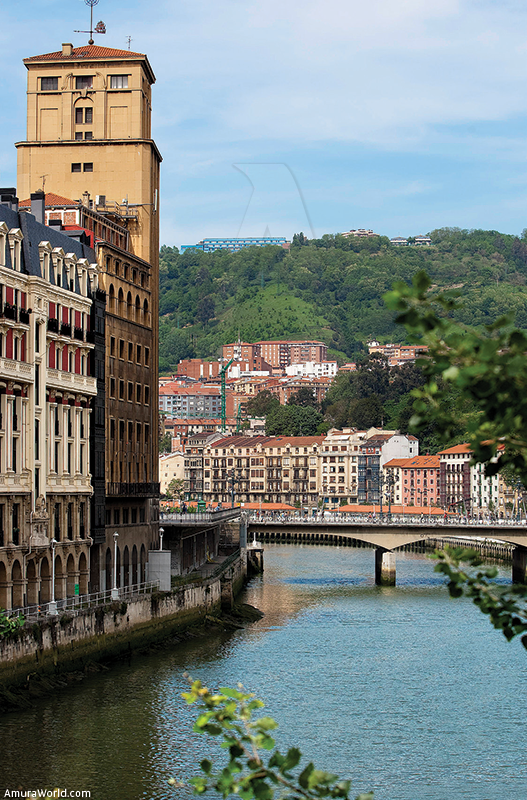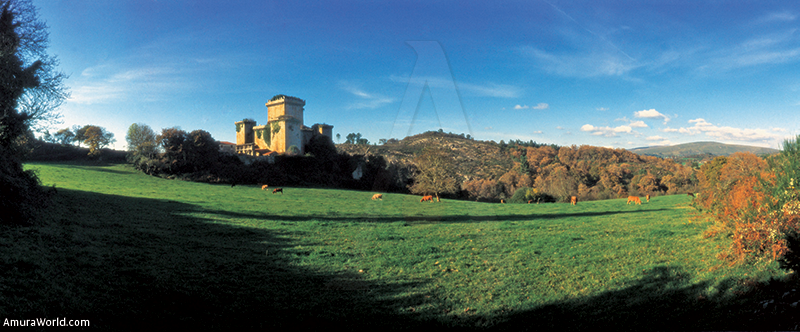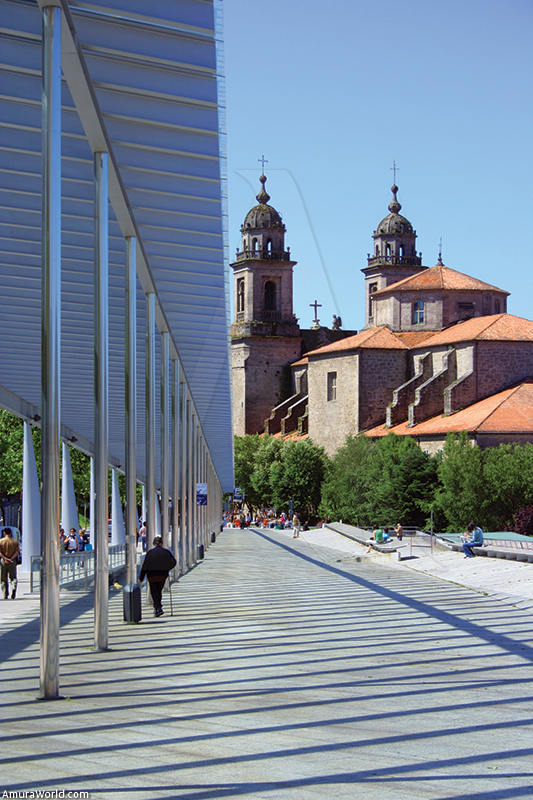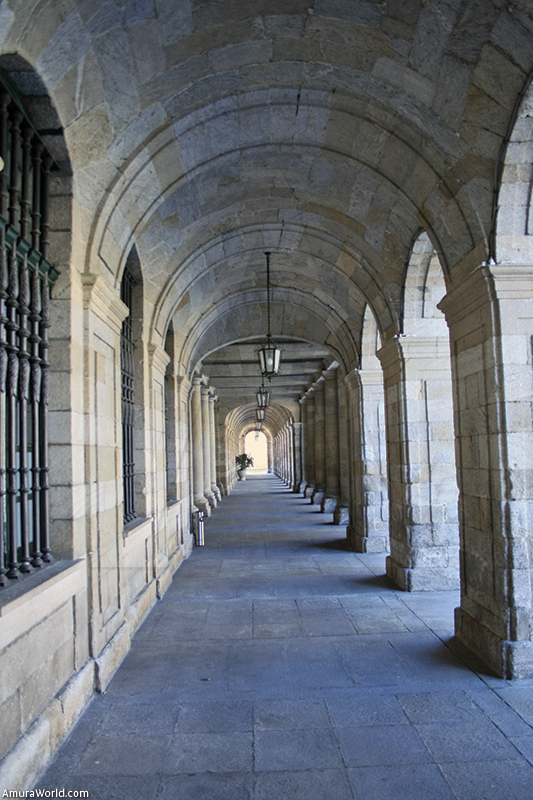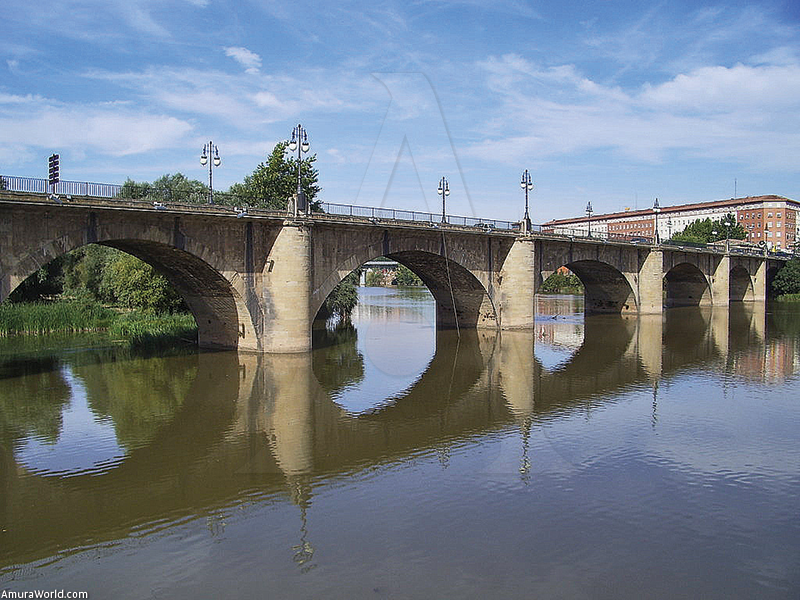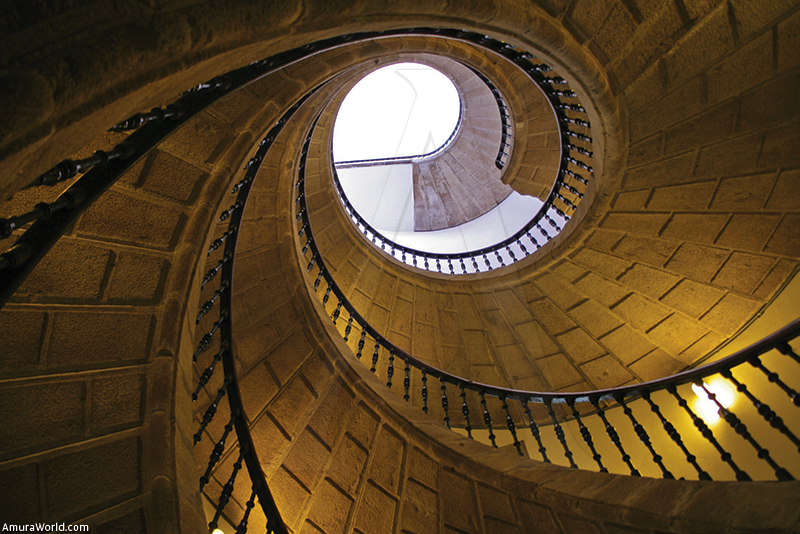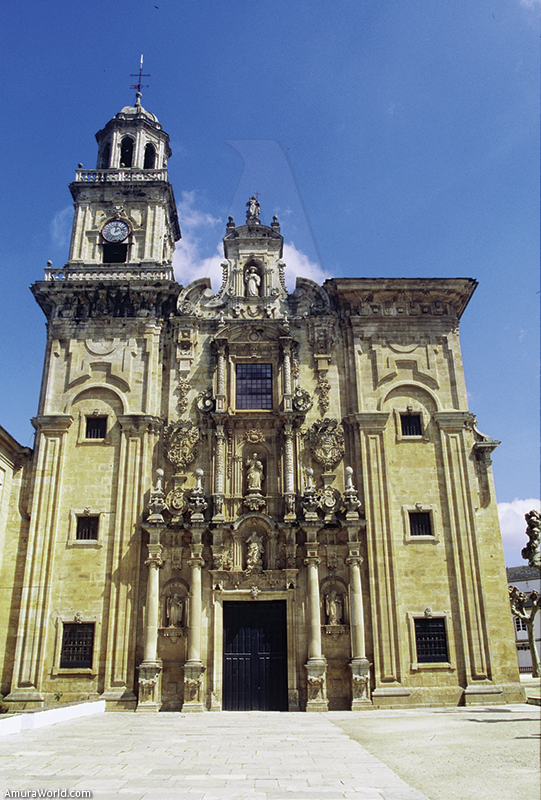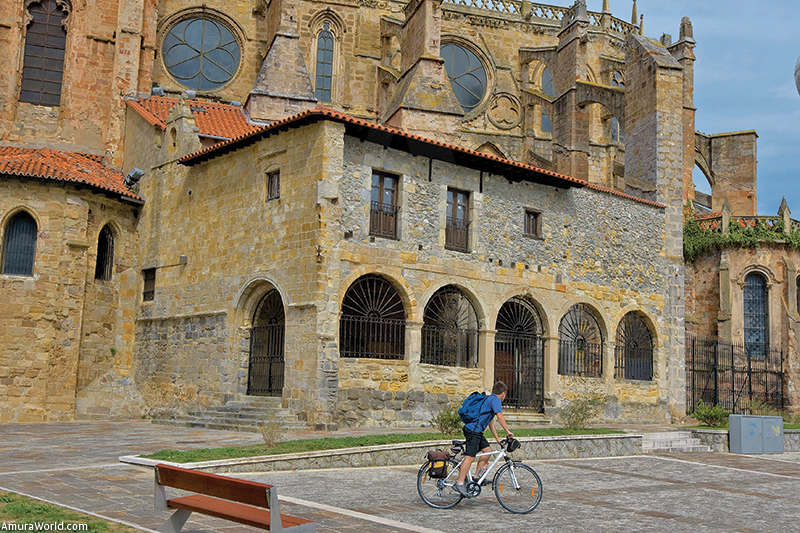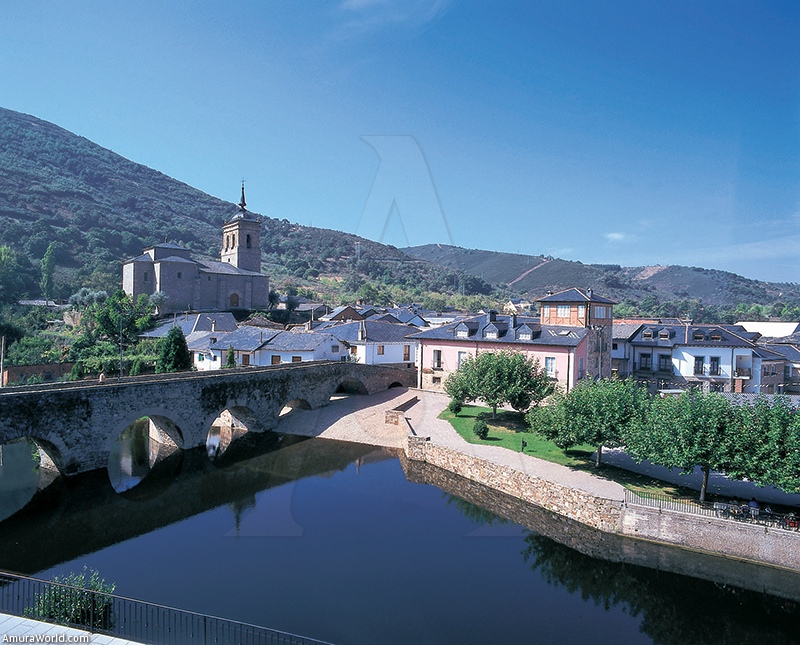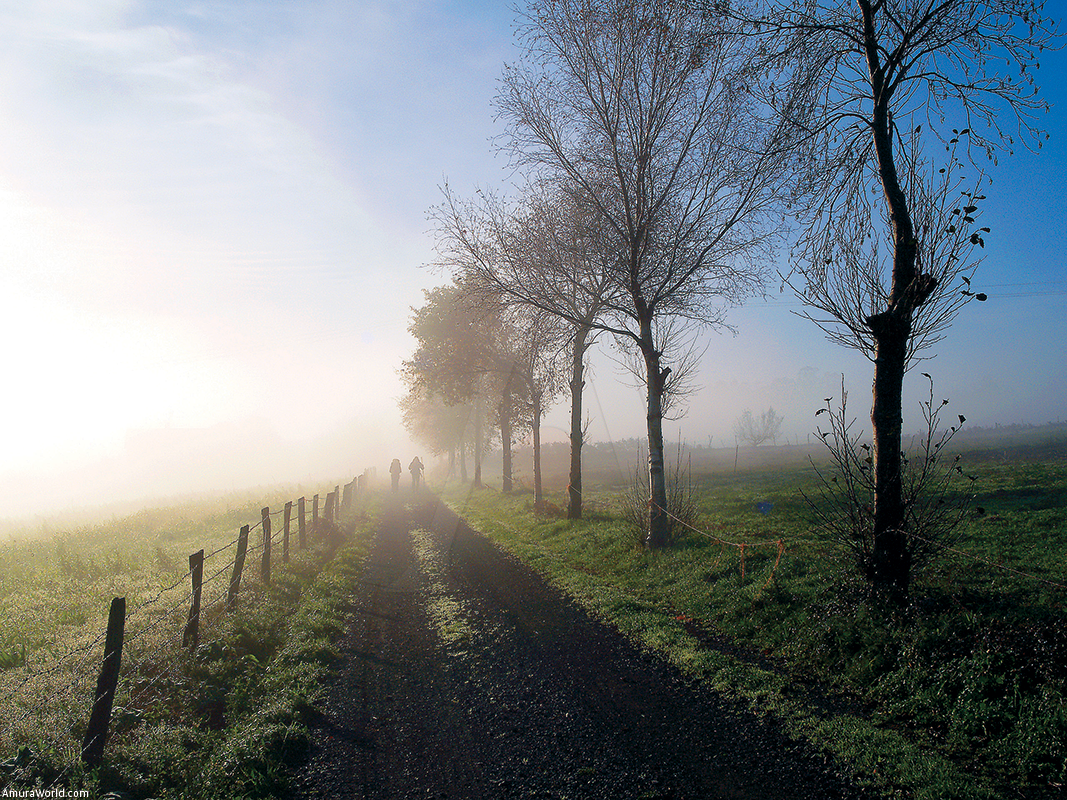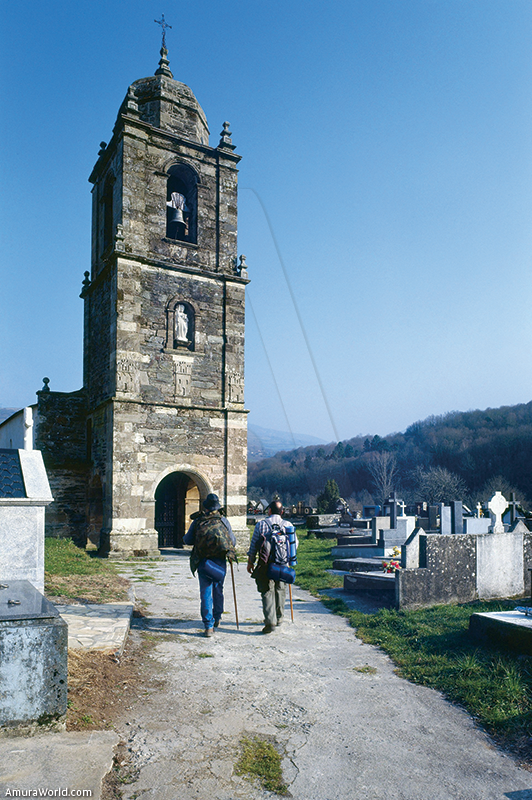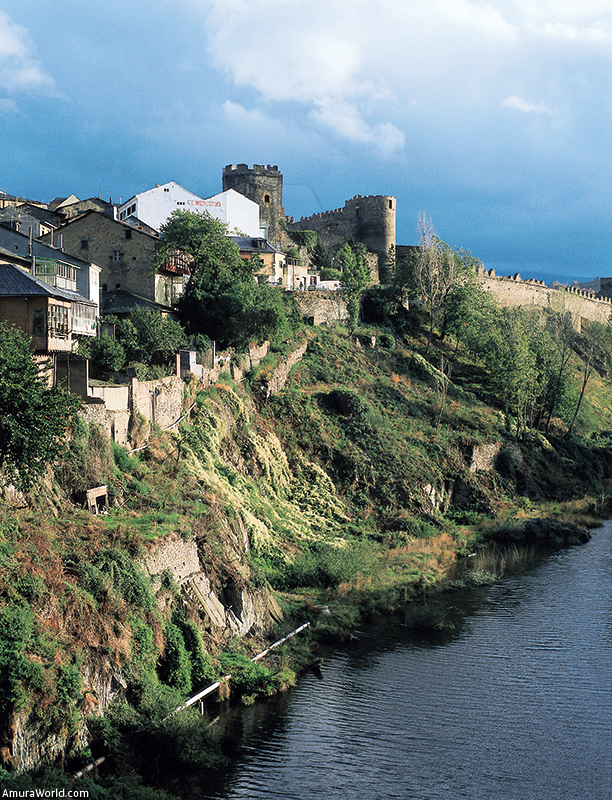{socialbuttons}
When the sun shines upon the northern coast of Spain, the green prairies glisten, contrasting with the reflection of the deep blue sea. The pilgrims have followed various ‘Caminos’, or routes, from the sea, the French Route, the Old Route, always sharing the same goal: to reach the tomb of James, son of Zebedee. As they walk, they become familiar with other pilgrims ; they talk, meditate, and that ancient tradition has reached our present 21st century with great force and with a large number of pilgrims. When we were navigating through the Atlantic coast on the south of France, we decided to begin our journey in our own way, at times walking, at times driving and at times navigating to become acquainted with the sould of that famous Camino to Santiago.
We began to travel through certain parts of the Camino to Santiago to discover regions and monuments of the past and the future; living between two worlds as we travelled through the universe of the 17th century, and discovered a road filled with symbols from the past, excited by the contemporary art and seduced by the fine cuisine.
Euskadi, the Sea Route
We followed the French coast in our sailboat and decided to meet the famous Camino to Santiago. Part of our equipment was still at sea while the rest of it travelled by car through the relevant areas, and meeting once again at our rendezvous point. We began at Hondarribia, a small town at the Edge of the Bidasoa river that separates Spain from France, as well as being the place the Palace of the Emperor Charles V, now a marvellous ‘Parador’, dominates the steep alleyways of the town surrounded by a wall. The church tower of Nuestra Señora del Manzano rose up to the blue sky, the neighbourhood of the ancient sailors was filled with people that enjoyed ‘pintxos’ and drinks, their conversations roaring through the streets.
It is an enchanting town where the yellow arrows appear, indicating where the pilgrims route begins. While our navigating equipment was still at the coast inside the sailboat, we travelled by car the few kilometres that would take us to San Sebastian-Donostia, where we would meet up again to discover the elegant city that surrounds the Concha beach and the Zurriola beach, where the Urumea river flows out into the ocean. The 19th century buildings adorn the streets, the cathedral defies the clouds and sun. From the Igeldo Mount, we admired the bay with the Santa Clara island that blocks the entrance and the remains of the Santa Cruz de la Mota castle that crowns the mount. We observed our sailboat make its way into the bay until it docked itself on the small and ancient dock of the castle.
p>It was a pleasure to stroll inside the streets of the old part of the city, discovering the Bretxa market with its excellent fish and seafood, go from one bar hopping to try each and every ‘pinxto’ – each bar offering its own speciality – and to enjoy the cider. We were especially delighted by La Viña, were Mikel entertained us with his good humour and his pleasure to savour all the ‘pintxos’ of Santiago Rivera. We admired the baroque church of Santa Maria, the elegant church of San Vicente, the Constitution Plaza, and the surprising aquarium with its inner tunnel where one can admire the sharks from up-close, the Naval Museum. In the new part of the city, we discovered the gothic cathedral when the light of the sun gave it an ochre hue. We visited the theatre, the glorious Hotel Maria Cristina, and the modern Kursaal Palace, designed by Rafael Moneo, made of class, and where lights and shadows play and embrace the annual San Sebastian Film Festival.
We later discovered El Peine del Viento, an iron sculpture created by Chillida at the Entrance of the bay, and we strolled through the Chillida Leku, discovering its enormous and intriguing works that weigh tons and which morph into surreal forms. Finally, we enjoyed the excellent regional cider at the Asigarraga Cider Musuem, discovering the apple orchards, how pressure is applied to the apples and finishing with a tasting tour of some of the most delicious Euskadi cider.
The pilgrims generally walk 25 km, more or less, per day, resting in the camps made especially for them, meditating on their existence and following the routes to the sea. After 5 days, we finally reached Bilbao. The sailboat took 10 more hours to penetrate the river, passing through a suspended bridge to reach the Bilbao marina, where we once again were reunited since it took us an hour to cover the 100 km that separated us from Bilbao.
The first thing we admired as we entered the city was the surprising Guggenheim Museum, exactly like a space bubble filled with curves that defy gravity in the midst of an ocean of glass. We were surprised and fascinated, it interior presenting us the monumental iron sculptures by Richard Serra named “The Matter of Time”, in which one looses the notion of space and equilibrium, and the Fog Sculpture by Fujiko Nakaya. It is a surreal world that enchants one.
The extravagant Palace of Congress and the Palace of Music absorbed us with its modern architecture, the Guggenheim guided us in a futuristic world inside the Abandoibarra route, where the names of famous architects like Gehry, Moneo, Pelli and Siza thunder, and which is the place of the polluting and haunting factories. Adjacent to the Museum, the famous spider by Louise Bourgeois and its entrance intrigue the famous Puppy, an enormous dog created with plants.
The alleyways in the old part of the city transported us into the past to follow the pilgrims steps of yore who arrived tired at this town, or the current ones who arrive after walking 25km per day and discover the Guggenheim at the footsteps of the ancient alleyways. The yellow arrows would point to the cathedral. The New Plaza shined and the Alhóndiga houses now a cultural space designed by Philip Stark. The rain fell on the pavement, as reminders of the ancient industrial neighbourhood, dark and filled with smoke, where the new emblem of Bilbao is now raised, a cult to the future.
Closer to the sea, at Getxo, is one of the most beautiful Bridges in the world: the Hanging Bridge, that, defying gravity, transports cars on a platform that crosses the river, suspended in the air by steel cables. Around this bridge, the enormous and elegant mansions are lost in the vegetation. Bilbao is a city with a certain charm that has launched itself into the future with its original and extravagant buildings, conserving the traces of its history.
La Rioja
While the sailboat continued its route, passing the beautiful ports that adorn the coast of Euskadi, Cantabria, Asturias and Galicia until it reached La Coruña, we decided to join with the French Route that travels through La Rioja, Castilla, Leon and Galicia. We found our companions at Santiago de Compostela, the goal of every route or, if time allows it, at the town of O Cebreiro where the French Route enters Galicia.
It took as an hour to arrive by car to Santo Domingo de la Calzada to discover the wonderful cathedral, the tower which rises, separated from the main building, like a soldier that keep watch over the plaza in which we resided, in the Parador that once was an old hospital for pilgrims. We walked through the alleyways where we could admire the ancient residences.
We discovered the region where the vineyards painted themselves with the colours of the fall, offering a festival of ochre’s, red’s and light greens. In Logroño, we visited the Bodegas of Ontañón, flaunting its Great Reserve amongst its excellent wines. It is a fascinating bodega, elegant and artistic, where the art of making wine is accompanied by the sculptures of Miguel Ángel Sáinz. It is a true passion for wine and for the accompanied art of mythology. We discovered the Vivanic Dynasty Museum of Wine with the objects that accompanied the making of the wine for centuries and its underground bodega, at the foot of the lovely town of Briones.
The Bodegas of the Marquees of Riscal left us dumbfounded with its luxurious hotel designed by Frank Gehry, which reminds one very much of the Guggenheim work, and which surges like a bruise in the midst of the vineyards. It offers marvellous spaces in the middle of the curves of the walls and ceilings, and the services inside the hotel invite one to feel as if they are living inside a palace amongst the luxury of great wines. In Casalarreina, we visited the imposing Monastery of Mercy.
In San Millan de la Cogolla, we discovered the Yuso Monastery. We walked through the baroque door, built in the 17th century, to arrive at the famous Salón de la Lengua, where we were lucky enough to see the codex and, above all, the 60th codex where one can find the Glosas Emilianenses, the first words written in Spanish and Basque, thus declaring Yuso as the “cradle of the language”. We visited the library where scrolls from the 17th century are kept, 30 books weighing between 40 and 60 kg, and the important codex’s, like the 46th one that dates to the year 964, its contents describing it as a dictionary and encyclopaedia. Nestled in the mountain that dominates Yuso, Suso is one of the caves where San Millán would retire to meditate and where his remains where buried in 574. It is protected by a church that features some Arab-inspired arches. It is a place of great importance for the followers of San Millán, and many of the pilgrims visit this place, departing from the traditional Route.
Finally, at Najera we discovered the Monastery of Saint Maria la Real, built in 1045, after the ‘reconquista’, and the church does indeed look like a fortress, which was finished in 1516. While our minds and eyes where being filled with history and architectural beauty, we enjoyed the exquisite food of the region inside the Echaurren restaurant, in the town of Ezcaray, to try the food prepared by Marisa Sánchez and Francis Paniego. We were delighted by the delicate flavours of Venta Moncalvillo, where we again tried food, this time prepared by Ignacio Echapresto, and the magnificent service of his brother, Carlos, who innovate in de kitchen, always adding a personal touch to their creations, which are prepared with ingredients from the fields they share with their mother.
At the Vivanic Dynasty Museum of Wine, we enjoyed their fantastic wines and their refined cuisine. With the windmill of sacred artworks that we discovered inside the monasteries, we felt intoxicated as we took in the culture, history and the fine food and superb wines. They related to us the story of the rooster and chicken of Santo Domingo de la Calzada, which tells the story of a young German pilgrim called Hugonell who died for rejecting the favours of a lady, and resurrected on his own. When the parents of this man told this story to the bishop, he said that he was as dead as the rooster and the chicken he was eating. At that moment, the two animals regained life and began to sing. Since then, in the cathedral of Santo Domingo de la Calzada, a beautiful cage with a window that looks inside always harbours a rooster.
We were fascinated by la Rioja, its autumnal colours and its wines. We discovered, as well, the enchanting historical town of Haro and we strolled through the streets of Logroño, a city bathed by the Ebro River, tasting the ‘tapas’ on Laurel Street, known as “the home of the elephants” in which every bar serves their own particular plate of ‘tapas’, whether it be with mushrooms, pig’s ear, seta, or fried potatoes. It was named so because it is said that all who enter leave with walking on four legs and in the manner of an elephant. We discovered the church of Saint Bartholomew, built in a gothic style in the 13th century, and we were left in awe in front of the baroque façade of the Church of Santiago, which features an immense Santiago Matamoros.
Castilla y León
Time flew by, and we had arranged to meet with our companions at the part if the French Route that starts at Galicia. Because of that, we had to rapidly walk through that beautiful region of Castilla and León, using the highway to take us to Burgos, where the arrows are mounted on the sumptuous cathedral. We then visited the cathedral and the León cloister before reaching Astorga and Ponferrada, ancient fortified cities.
Galicia
We entred Galicia through one of the cliffs of its mountains at more than 1,300 metres above sea-level to meet again with our travel companions and discover O Cebreiro, an enchanting town with stone houses and tiled roofs. Some houses that are called ‘pallozas’ are built on top of ancient Celt foundations in the typical oval shape, and the Church of Saint Maria la Real is a jewel of pre-Romanic art that finds its enchantment in the legend of the miracle when the bread and wine became flesh and blood. Its stones reflect the shadows of the pilgrims and the thoughts of their meditations. The church vibrates with its beautiful images of Saint Maria la Real. In front of the altar, we became astounded admiring the challis, who experienced the miracle and the relic box that holds the flesh and blood.
The Route became possessed with an even grater mystical significance even when travelling on it by car, through the curves of the mountains, crossing the pilgrims on bikes or on foot. We reached the immense Benedictine Monastery of Samos, whose feet are bathed in the river. With its two cloisters and a monumental church, it is a place that calls forward faith and mysticism to such a degree that even an agile and intelligent rabbit accompanied us as we walked through the hallways. This is one of the most ancient monasteries in Spain, begun in the 6th century, but one which shows all the architectural styles because of the renovations, passing from the pre-Roman up to modern architecture. In the town that features a small amount of homes, we found a small chapel in the middle of forest, next to a river with a bridge made of stones.
When we reached Sarria, we discovered the small church and in Portomarin we admired the fortified church of Saint Nicholas, which was dismounted given that it was to be flooded by the damn, and which today crown a hilltop, next to the Conde la Maza and the Church of Saint Peter passage.
A great surprise awaited us at the church of Vilar de Donas, where the first mural paintings of the 14th century adorned the mural, the tombstones, the remains of the Knights of Santiago. It is, without a doubt, one of the jewels of the Camino de Santiago, founded in the 12th century, when the Knights of the Military Order of Santiago settled in that area, destined to protect the pilgrims. We visited the Castle of Pambre, hidden inside a cliff, in the middle of the forest, whose walls defy time and tell stories of war and battles. Built in the 14th century by Gonzalo Ozores de Ulloa, it rises on a spot that dominates the Pambre river, near Palas de Rei.We arrived at the chapel of Saint Roque, in Melide, to discover a gorgeous portal. In the medieval plaza we admired the church of Sancti Spiritus, next to the chapel of Saint Anthony and the Museum da Terra de Melide nestled in the ancient pilgrim hospital. Melide is a land of bagpipes, here they were born and here is where the Primitive Route and the French Route merge. On the outskirts of the town, the Church of Santa Maria, built in the 12th century, invited us to meditate for a few moments in front of the Romanic portal. We bathed our feet in the river that borders the pilgrim shelter of Ribadiso, in front of a Romanic bridge that has seen a large number of sandals.
Finally, we entered Santiago de Compostela, leaving the car behind and began to walk, reaching de Mount do Gozo between pilgrims that arrived after many, many days of walking. We strolled through alleyways, observed every church, every Romanic façade, each and every gothic or baroque structure, travelling bellow arches, discovering ‘pintxos’ and the excellent restaurants such as the Broá, the Rúa do Vilar or the Casa Ana. We arrived at the Obradoiro Plaza, the sumptuous plaza crowned by an imposing cathedral. We embraced the Saint, touched the pillar which brings good luck and passed through the Holy Door, open since it was Xacobeo, the Holy Year, undertaking al the rites that tradition and faith call for one to do. We felt in our hearts a mystical purity that only a pilgrim can feel, with a necessity to meditate about life and its values.
We discovered the School of Saint Jerome, the Hostel for the Catholic Kings, the Plaza of Platerías with the House of Cabildo, the Azabachería Plaza with the Corticela Chapel and the San Martin Pinario Monastery. We travelled through the typical ‘rúas’ that palpitate with the heart of the Apostle James, contemplated the Deán House, the School of Fonseca, the University Plaza and the Company Church, the market, and the church and convent of Saint Augusts, the Cervantes Plaza, etc.
We had travelled over 800 km, crossing beautiful regions, different epochs, visiting cathedrals and fascinating churches, sumptuous monasteries, walking through an ocean of ambition to get close to a saint. Euskadi, La Rioja and Galicia had given us the pleasure of meditation, the agapes, and the natural beauty. We had crossed a Route that fills one with mysticism and enriches the soul. Traveller walking to Santiago, worry no, if your feet hurt or if your soul travels by car, you will always reach a point where your mind will define a new future in three hours of meditation and reflection. Many a pilgrim completes his journey in the cape of Finisterre, o Fisterra as the locals call it, the westernmost cape of the Iberian peninsula, the end of the world where, after existing on the Route to Santiago de Compostela, a world that leads us to enjoy the beauties of sacred art and fills us with legends and holy tales.
Text: Patrick Monney ± Photo: Patrick Monney, Oficina Española de Turismo en México, Turismo Euskadi, Turismo Galicia y La Rioja

